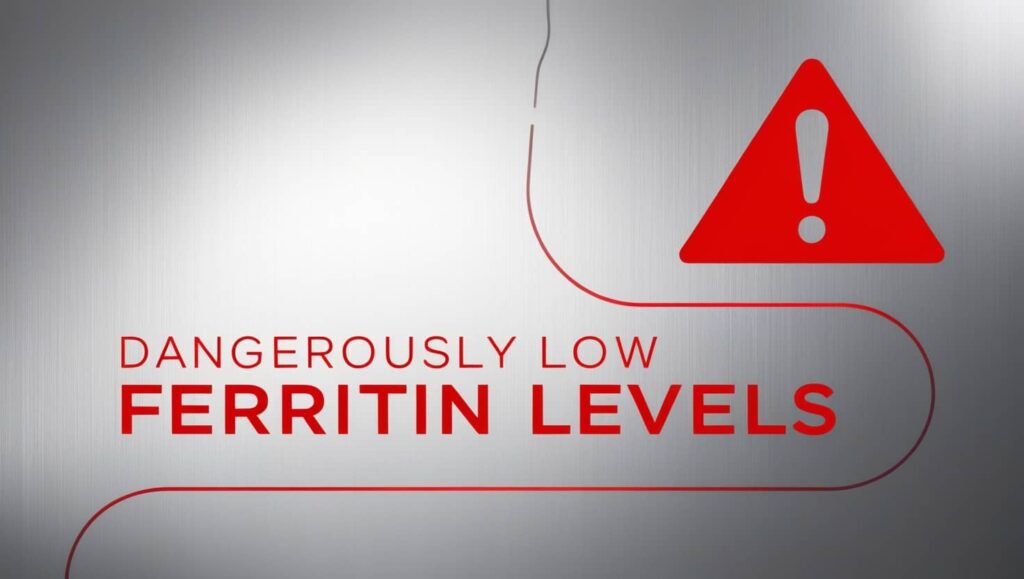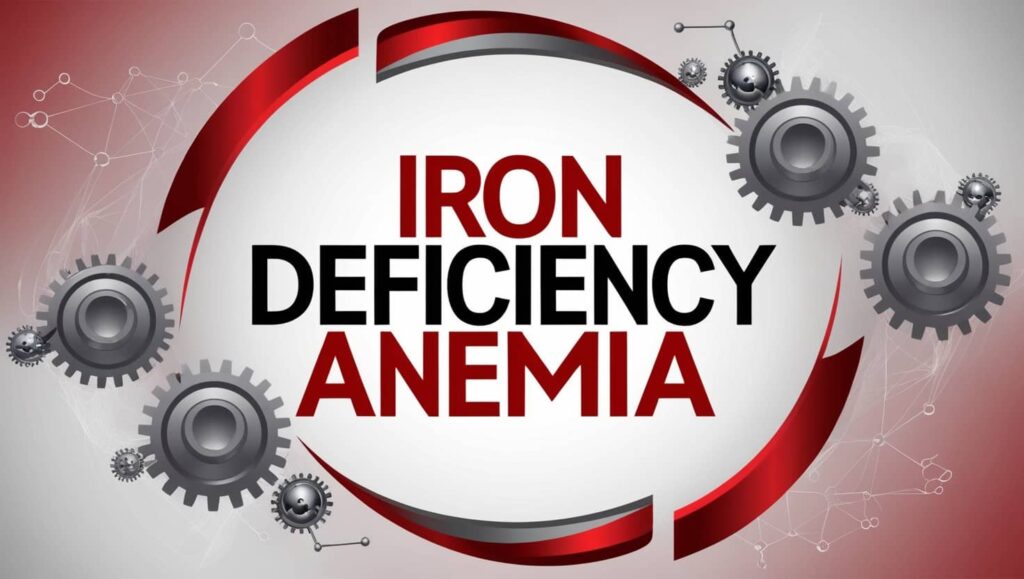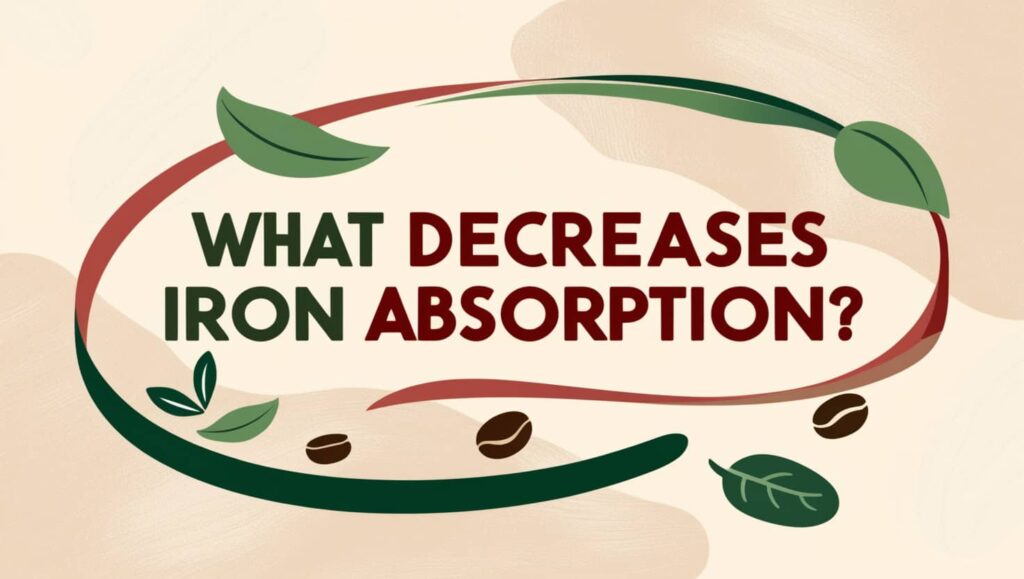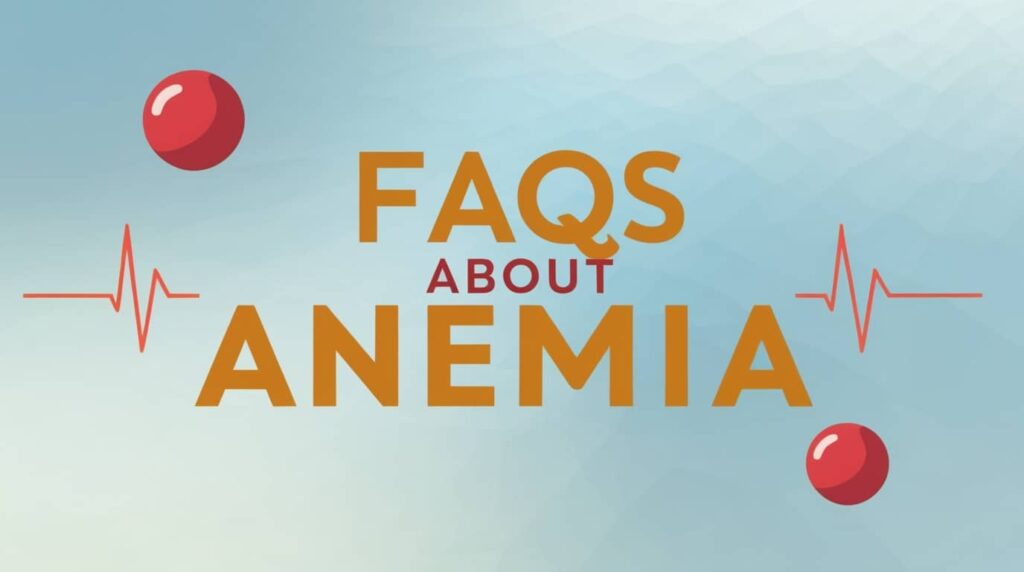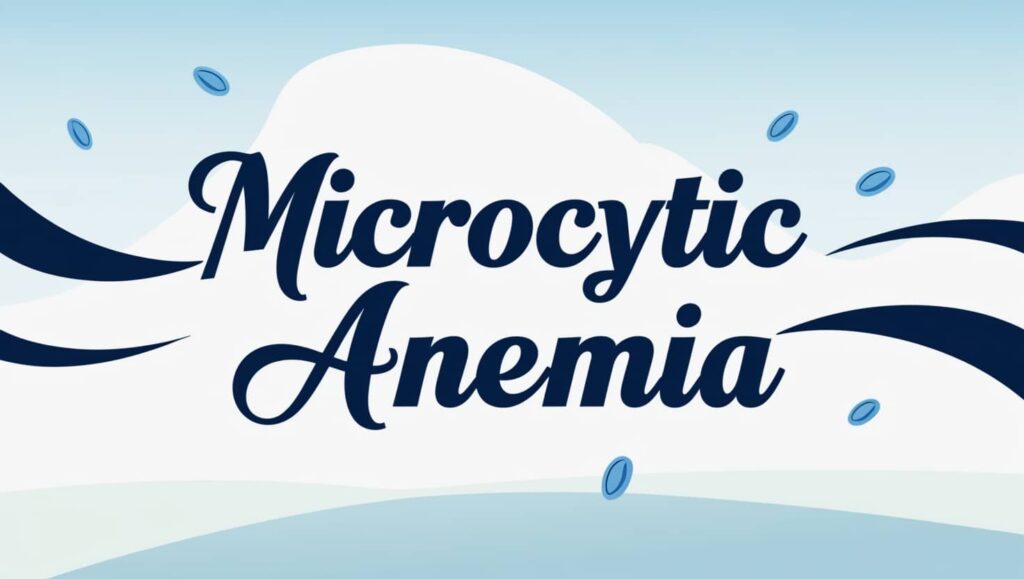Low iron symptoms female are a common yet often overlooked health issue, affecting numerous aspects of physical and mental well-being.
A lack of iron can have an impact on general health since it is essential for the production of hemoglobin, which is responsible for carrying oxygen in the blood.
Women are particularly at risk due to menstruation, pregnancy, and higher iron needs.
The following article lists the signs of low iron in women, highlighting the importance of early detection for effective management and optimal health. Go ahead and read!
List of Low Iron Symptoms in Female
Appearance of low iron symptoms female due to recurrent blood loss.
Women who have the following are especially sensitive to low iron levels:.
- Heavy menstruation.
- Uterine fibroids.
- Blood loss during childbirth.
- Increased iron needs during pregnancy.
- Blood loss due to stomach ulcers or colon cancer.
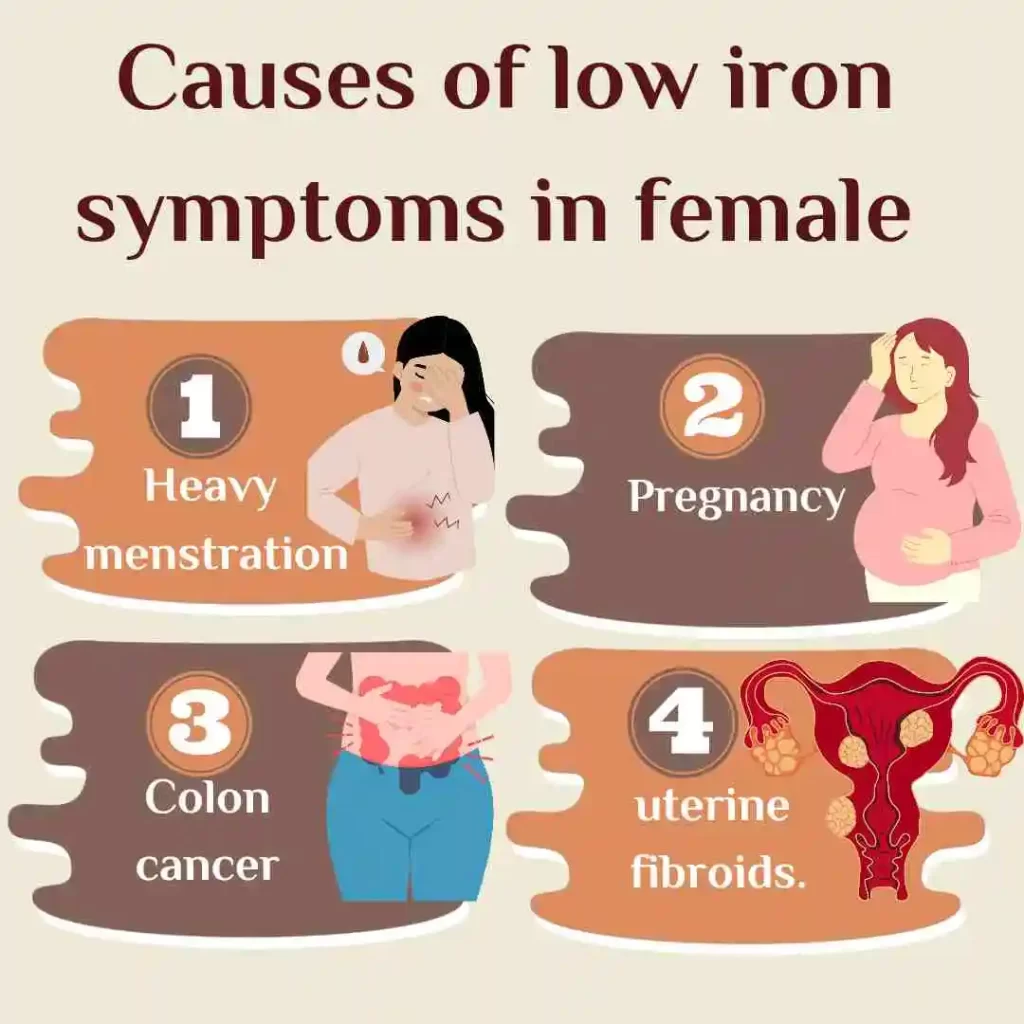
Furthermore, these disorders increase the risk of acquiring iron deficiency anemia.
According to a WHO research, around 17% of menstrual females had iron deficiency.
In addition, a different study published in an American Medical Association journal found that close to 40% of girls and young women between the ages of 12 and 21 have low iron levels, with 6.3% having iron-deficiency anemia.
15 Signs You Are Iron Deficient
Iron is an essential mineral required for growth, development, and vital biological functions like synthesis of hemoglobin and DNA.
Additionally, It helps to maintain healthy bone marrow, muscles, organ function, and the immune system.
Furthermore, Ferritin and hemoglobin are crucial blood proteins used to estimate iron levels, and diagnosis of anemia based on hemoglobin levels.
When iron levels drop than normal, this means you are suffering from iron deficiency anemia that contributes with several signs such as:.
- Weaknesses.
- Cold hands and feet.
- Headache.
- Restless legs feel pins and needles in legs and feet.
- Disturbance in memory.
- Brittle nails.
- Loss of hair.
- Increased heart beats.
- Loss of concentration.
- Shortness of breath.
- Pale skin.
- Low blood pressure.
- Glossitis, an inflammation of the tongue, is one of low iron symptoms female, associated with swollen, painful, redness, and smoothness of tongue surface.
- Pica is a rare condition marked by desires for both non-nutritive and nutritive items. According to research published in the National Library of Medicine involving three people suffering from severe iron deficiency anemia, this ailment has been linked to low iron levels.
- Low appetite occurs due to changes in levels of ghrelin hormone that are responsible for regulating hunger.
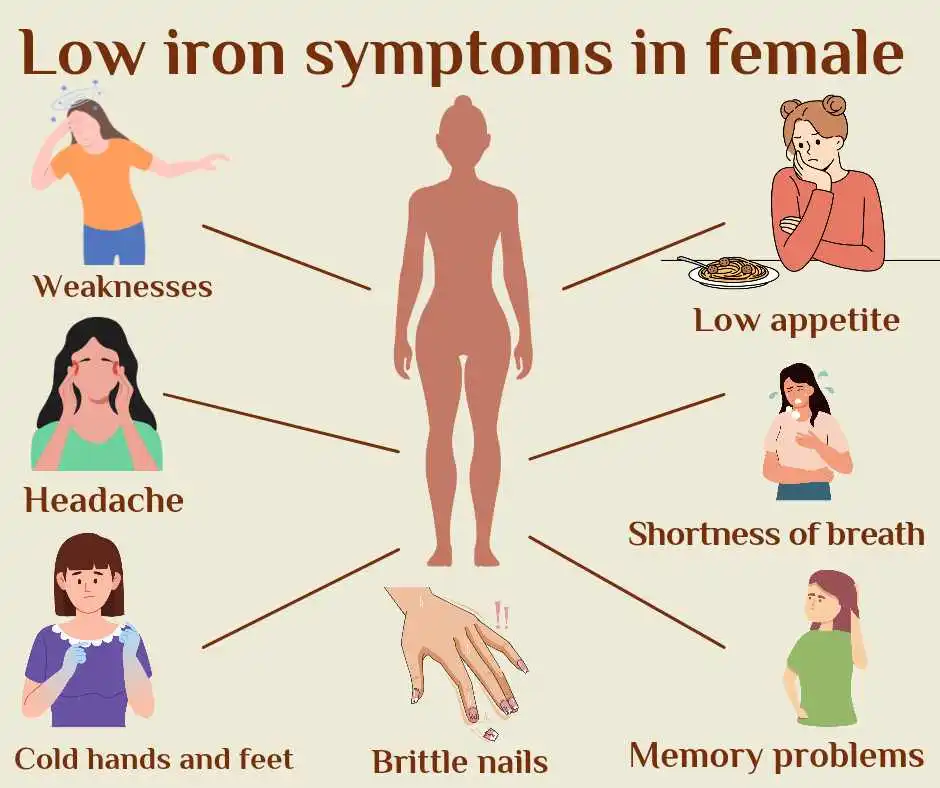
What Is a Low Iron Level for a Woman?
Females who lose blood monthly are at risk of low iron deficiency.
Therefore, it’s necessary to measure serum iron levels in the blood to ensure if there’s iron deficiency or not.
In addition, other analyses can be performed, such as a complete blood picture to measure hemoglobin levels and serum ferritin level to estimate the amount of stored iron in the body.
According to WHO guidelines, low serum iron levels are below 26 mg\ dL, while hemoglobin levels indicate iron deficiency anemia under 12 g\dL
As a result, a lack of iron indicates iron deficiency anemia, women in this issue should take iron supplements into their daily diet.
Females aged between 19 to 49 need around 14.8mg per day, while women aged 50 and above require 8.7 mg per day.
Also, for pregnant women, about 27 mg per day and 9 mg per day for lactation.
However, if a woman aged 50 still has a menstrual cycle should take iron supplements at the same amount as those aged 19 to 49.
Read Also: Iron Deficiency Anemia Causes, Symptoms and Treatments
What Is a Normal Iron Level for a Woman?
Normal iron levels as well as normal hemoglobin levels are critical for women because of their specific physiological requirements.
It is important to note that the normal range for lab tests differ from one laboratory to another; however, standard references can be used as guidelines for women:
- Serum iron levels: 26 – 170 mg\dL.
- Normal Hemoglobin levels: 12 – 15 g\dL.
In addition, to avoid low iron symptoms female, women should include iron rich food in their daily meals.
Iron in food can be classified into heme iron or non heme iron, such as:
Food rich in heme iron
- Meat.
- Beef.
- Chicken liver.
- Oysters.
- Tuna and sardines.
Food rich in non heme
- Cereals.
- Potato.
- Spinach.
- Dark chocolate.
- Beans.
- Nuts.
- Rice.
- Bread.
It should be noted that heme iron is more readily absorbed than non heme iron.
Certain conditions can increase or decrease absorption of non heme iron.
For example, vitamin C with heme iron in the same meal can improve absorption of non heme iron.
Related: Iron Deficiency Without Anemia
Why Is My Body Not Absorbing Iron Supplements?
Health care providers often recommended iron supplements as treatment of iron deficiency anemia.
However, some rules should be observed in order to maximize the benefits and ensure efficient iron absorption, including:
- It is recommended to take iron supplements on an empty stomach, preferably 30 minutes before meals. This is due to research showing that some meals and beverages, such as tea, coffee, wine, and cereals, might inhibit iron absorption.
- Study data indicates that vitamin C can enhance iron absorption more effectively. So, it is recommended to eat vitamin C-rich foods like oranges and peppers alongside meals to optimize the uptake of iron.
On the other hand, several factors can hinder absorption of iron supplements, for example:
- Medical issues like gastrotraphia, celiac disease, infection with helicobacter pylori and bariatric or weight loss surgery.
- Certain Medications, such as gastric acid suppression drugs, and antibiotics.
Summary
Low iron symptoms female are often due to recurrent blood loss, particularly during heavy menstruation, uterine fibroids, pregnancy, or colon cancer.
Iron is critical for growth, development, and maintaining healthy bone marrow, muscles, and the immune system.
Signs of iron deficiency include weakness, headache, brittle nails, shortness of breath, pica, and low appetite.
Normal iron levels and hemoglobin levels are critical for women due to their specific physiological requirements.
To avoid low iron symptoms, women should include iron-rich foods in daily meals.
Some factors can hinder iron absorption, such as medical issues, and certain medications.
References
- Hanif, N. (2023, August 8). Chronic iron deficiency. Stats Pearls [Internet]. From NIH
- World Health Organization. (n.d.-a). Anemia in women and children.From World Health Organization.
- U.S. Department of Health and Human Services. (n.d.). Symptoms. National Heart Lung and Blood Institute. From NIH
- Khan, Y., & Tisman, G. (2010, March 12). Pica in Iron Deficiency: A Case Series. Journal of medical case reports. From NIH
- I;, C. M. (n.d.). Anemia in clinical practice-definition and classification: Does hemoglobin change with aging?. Seminars in hematology. From PubMed
- A review of nutrients and compounds, which promote … (n.d.-a). From Wiley online library
- Hanif, N. (2023a, August 8). Chronic iron deficiency. Stats Pearls [Internet]. From NIH
- NHS. (n.d.-a). NHS choices. From NIH
- Angela C. Weyand, M. (2023, June 27). Prevalence of iron deficiency and iron-deficiency anemia in US females aged 12-21 years, 2003-2020. JAMA
- Ghrayeb, H., Elias, M., Nashashibi, J., Youssef, A., Manal, M., Mahagna, L., Refaat, M., Schwartz, N., & Elias, A. (2020, June 4). Appetite and ghrelin levels in iron deficiency anemia and the effect of parenteral iron therapy: A longitudinal study. PloS one. From PubMed
- U.S. Department of Health and Human Services. (n.d.-a). Iron-deficiency anemia. National Heart Lung and Blood Institute. From NIH



